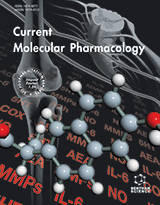Abstract
During the past decades, an increasing number of ion channel and transporter types have been identified acting together to produce cardiac and neuronal pacemaker action potentials. The basis of pacemaker activity was understood in more detail by using single-microelectrode recordings on cells isolated from pacemaker regions. Meanwhile, this powerful technique was complemented by computer modeling and recombinant technologies, including gene inactivation of ion channels and transporters, which may be involved in the generation of the electrical activity of pacemaker cells. Several genes of the voltage-gated Ca2+ channel (VGCC) family have been ablated, and their role in cardiac and neuronal pacemaking is compared in the present summary, focusing on the role of murine R-type voltage-gated Ca2+ channels encoded by cacna1e and expressing the ion conducting subunit Cav2.3.
Keywords: Voltage-gated Ca2+ channels, pharmacoresistant R-type, SUDEP, epilepsy, sleep, atrial conduction.
Graphical Abstract
Current Molecular Pharmacology
Title:R-Type Voltage-Gated Ca2+ Channels in Cardiac and Neuronal Rhythmogenesis
Volume: 8
Author(s): Schneider T., Dibue-Adjei M., Neumaier F., Akhtar I., Hescheler J., Kamp M.A. and Tevoufouet E.E.
Affiliation:
Keywords: Voltage-gated Ca2+ channels, pharmacoresistant R-type, SUDEP, epilepsy, sleep, atrial conduction.
Abstract: During the past decades, an increasing number of ion channel and transporter types have been identified acting together to produce cardiac and neuronal pacemaker action potentials. The basis of pacemaker activity was understood in more detail by using single-microelectrode recordings on cells isolated from pacemaker regions. Meanwhile, this powerful technique was complemented by computer modeling and recombinant technologies, including gene inactivation of ion channels and transporters, which may be involved in the generation of the electrical activity of pacemaker cells. Several genes of the voltage-gated Ca2+ channel (VGCC) family have been ablated, and their role in cardiac and neuronal pacemaking is compared in the present summary, focusing on the role of murine R-type voltage-gated Ca2+ channels encoded by cacna1e and expressing the ion conducting subunit Cav2.3.
Export Options
About this article
Cite this article as:
T. Schneider, M. Dibue-Adjei, F. Neumaier, I. Akhtar, J. Hescheler, M.A. Kamp and E.E. Tevoufouet, R-Type Voltage-Gated Ca2+ Channels in Cardiac and Neuronal Rhythmogenesis, Current Molecular Pharmacology 2015; 8 (1) . https://dx.doi.org/10.2174/1874467208666150507093845
| DOI https://dx.doi.org/10.2174/1874467208666150507093845 |
Print ISSN 1874-4672 |
| Publisher Name Bentham Science Publisher |
Online ISSN 1874-4702 |
 47
47 5
5
- Author Guidelines
- Bentham Author Support Services (BASS)
- Graphical Abstracts
- Fabricating and Stating False Information
- Research Misconduct
- Post Publication Discussions and Corrections
- Publishing Ethics and Rectitude
- Increase Visibility of Your Article
- Archiving Policies
- Peer Review Workflow
- Order Your Article Before Print
- Promote Your Article
- Manuscript Transfer Facility
- Editorial Policies
- Allegations from Whistleblowers
- Announcements
Related Articles
-
Bioactive Constituents from an Endophytic Fungus, Penicillium polonicum NFW9, Associated with Taxus fauna
Medicinal Chemistry Recent Patents, Regulatory Issues, and Toxicity of Nanoparticles in Neuronal Disorders
Current Drug Metabolism Structure-Based Design of Benzimidazole Sugar Conjugates: Synthesis, SAR and In Vivo Anti-inflammatory and Analgesic Activities
Medicinal Chemistry The Biology of the RNA Binding Protein Guanine-Rich Sequence Binding Factor 1
Current Protein & Peptide Science Increased CRMP2 Phosphorylation is Observed in Alzheimers Disease; Does this Tell us Anything About Disease Development?
Current Alzheimer Research Clinical Uses of Melatonin in Neurological Diseases and Mental and Behavioural Disorders
Current Medicinal Chemistry Sweet and Sour - Oxidative and Carbonyl Stress in Neurological Disorders
CNS & Neurological Disorders - Drug Targets Aspects of the Stability and Bioavailability of Carbohydrates and Carbohydrate Derivatives
Mini-Reviews in Medicinal Chemistry Seizures and Antiepileptic Drugs: From Pathophysiology to Clinical Practice
Current Pharmaceutical Design Carnitine Metabolism and Deficit - When Supplementation is Necessary?
Current Pharmaceutical Biotechnology Ester Prodrugs of Ketoprofen: Synthesis, In Vitro Stability, In Vivo Biological Evaluation and In Silico Comparative Docking Studies Against COX-1 and COX-2
Current Drug Discovery Technologies Repetitive Transcranial Magnetic Stimulation to Treat Substance Use Disorders and Compulsive Behavior
CNS & Neurological Disorders - Drug Targets HCN Channels Modulators: The Need for Selectivity
Current Topics in Medicinal Chemistry Fragile X Mental Retardation Protein: Many Partners and Multiple Targets for a Promiscuous Function
Current Genomics Minocycline and Doxycycline: More Than Antibiotics
Current Molecular Pharmacology Measuring Receptor Occupancy with PET
Current Pharmaceutical Design New Adamantane Derivatives with Sigma Affinity and Antiproliferative Activity
Medicinal Chemistry FMRI of the Emotions: Towards an Improved Understanding of Amygdala Function
Current Medical Imaging Research Review: Childhood Maltreatment and Executive Functioning During Adolescence
Adolescent Psychiatry Editorial [Hot topic: The Urokinase Receptor System as Strategic Therapeutic Target: Challenges for the 21st Century (Executive Guest Editor: Bernard Degryse)]
Current Pharmaceutical Design


























